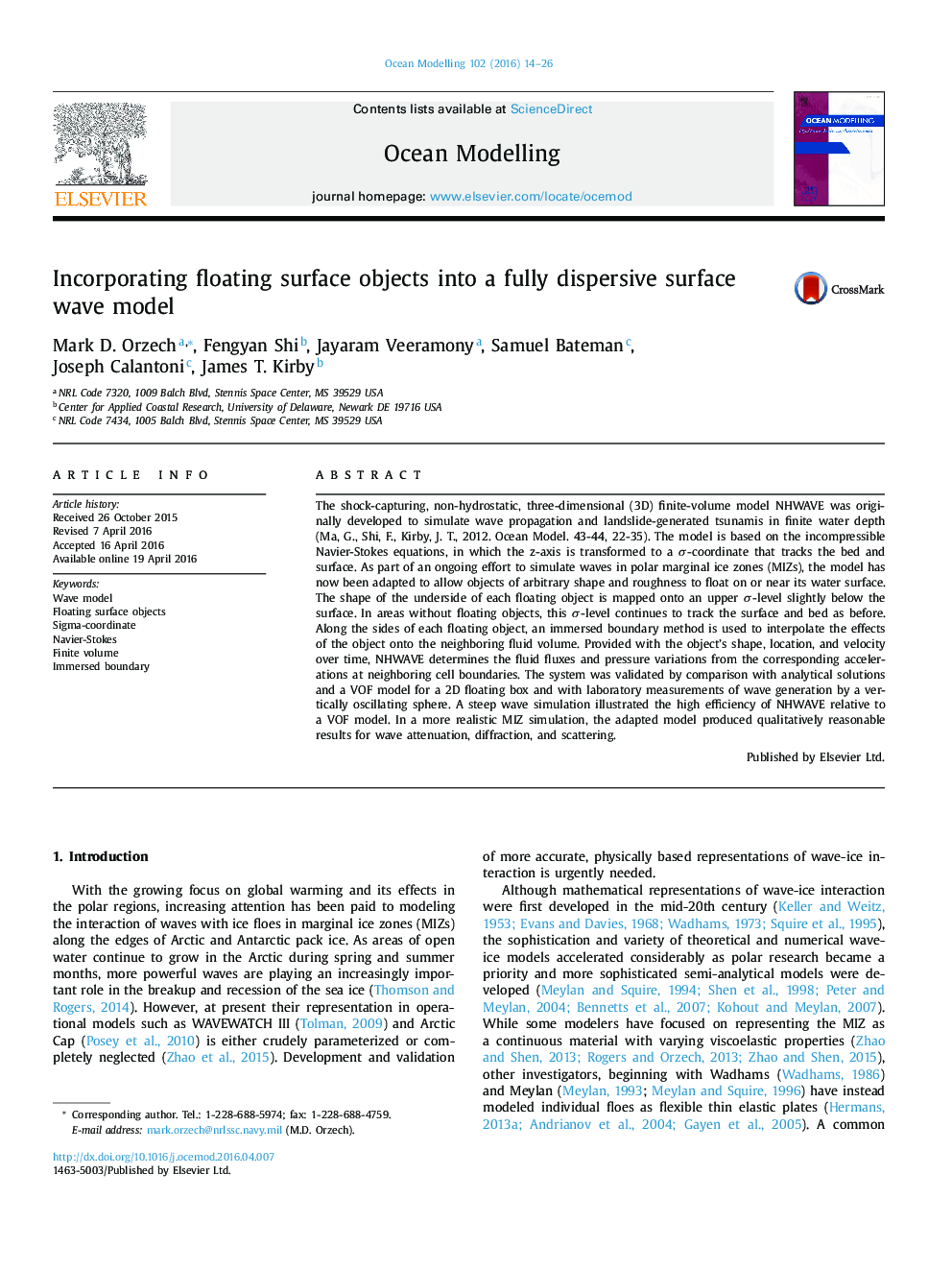| کد مقاله | کد نشریه | سال انتشار | مقاله انگلیسی | نسخه تمام متن |
|---|---|---|---|---|
| 6388035 | 1627747 | 2016 | 13 صفحه PDF | دانلود رایگان |
- Non-hydrostatic wave model NHWAVE adapted to accommodate floating surface objects.
- Model's sigma coordinate mapped onto underside of each floating object.
- Immersed boundary method interpolates object fluxes and pressure onto fluid volumes.
- Comparisons with analytical 2D solutions, 3D lab experiment, and VOF model.
- Part of effort to model waves in marginal ice zones with coupled CFD-DEM system.
The shock-capturing, non-hydrostatic, three-dimensional (3D) finite-volume model NHWAVE was originally developed to simulate wave propagation and landslide-generated tsunamis in finite water depth (Ma, G., Shi, F., Kirby, J. T., 2012. Ocean Model. 43-44, 22-35). The model is based on the incompressible Navier-Stokes equations, in which the z-axis is transformed to a Ï-coordinate that tracks the bed and surface. As part of an ongoing effort to simulate waves in polar marginal ice zones (MIZs), the model has now been adapted to allow objects of arbitrary shape and roughness to float on or near its water surface. The shape of the underside of each floating object is mapped onto an upper Ï-level slightly below the surface. In areas without floating objects, this Ï-level continues to track the surface and bed as before. Along the sides of each floating object, an immersed boundary method is used to interpolate the effects of the object onto the neighboring fluid volume. Provided with the object's shape, location, and velocity over time, NHWAVE determines the fluid fluxes and pressure variations from the corresponding accelerations at neighboring cell boundaries. The system was validated by comparison with analytical solutions and a VOF model for a 2D floating box and with laboratory measurements of wave generation by a vertically oscillating sphere. A steep wave simulation illustrated the high efficiency of NHWAVE relative to a VOF model. In a more realistic MIZ simulation, the adapted model produced qualitatively reasonable results for wave attenuation, diffraction, and scattering.
Journal: Ocean Modelling - Volume 102, June 2016, Pages 14-26
